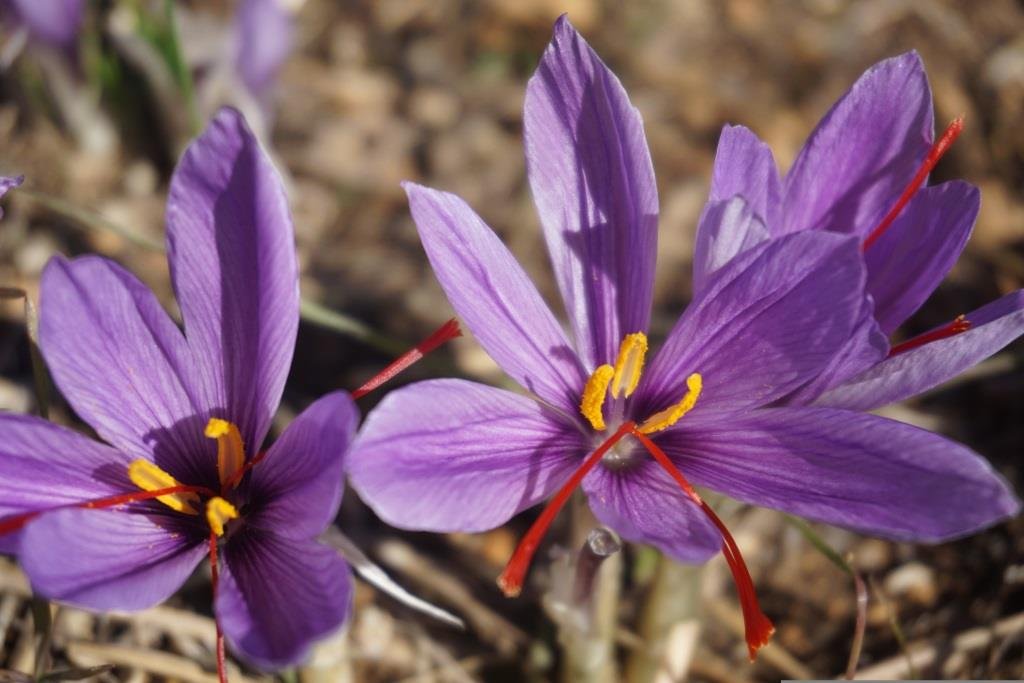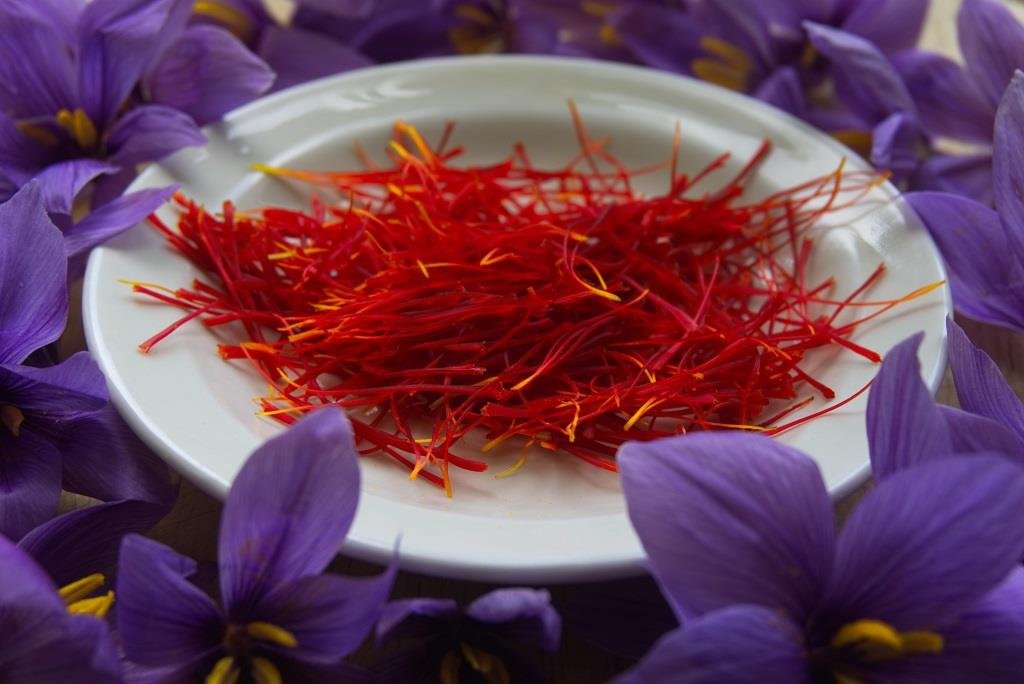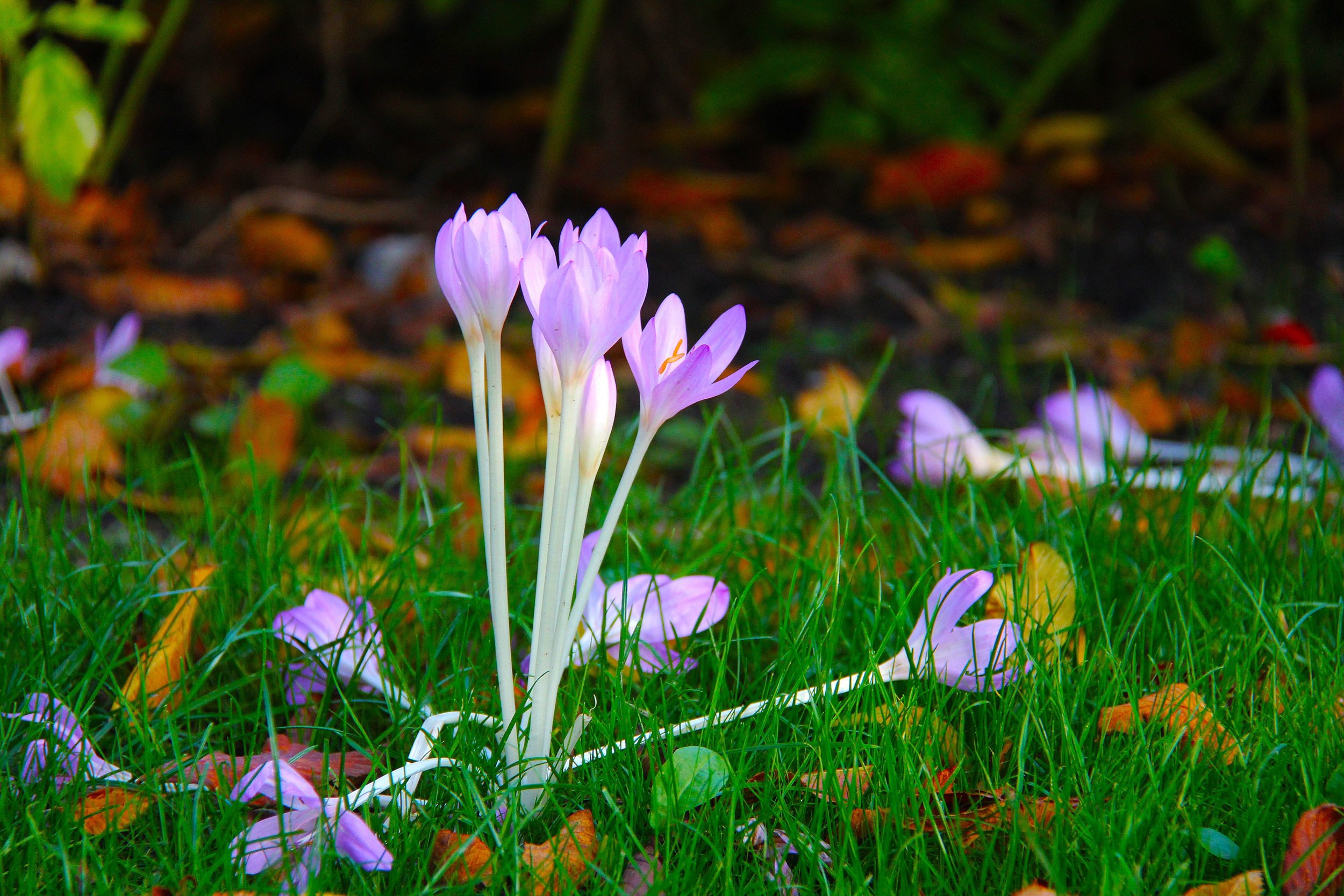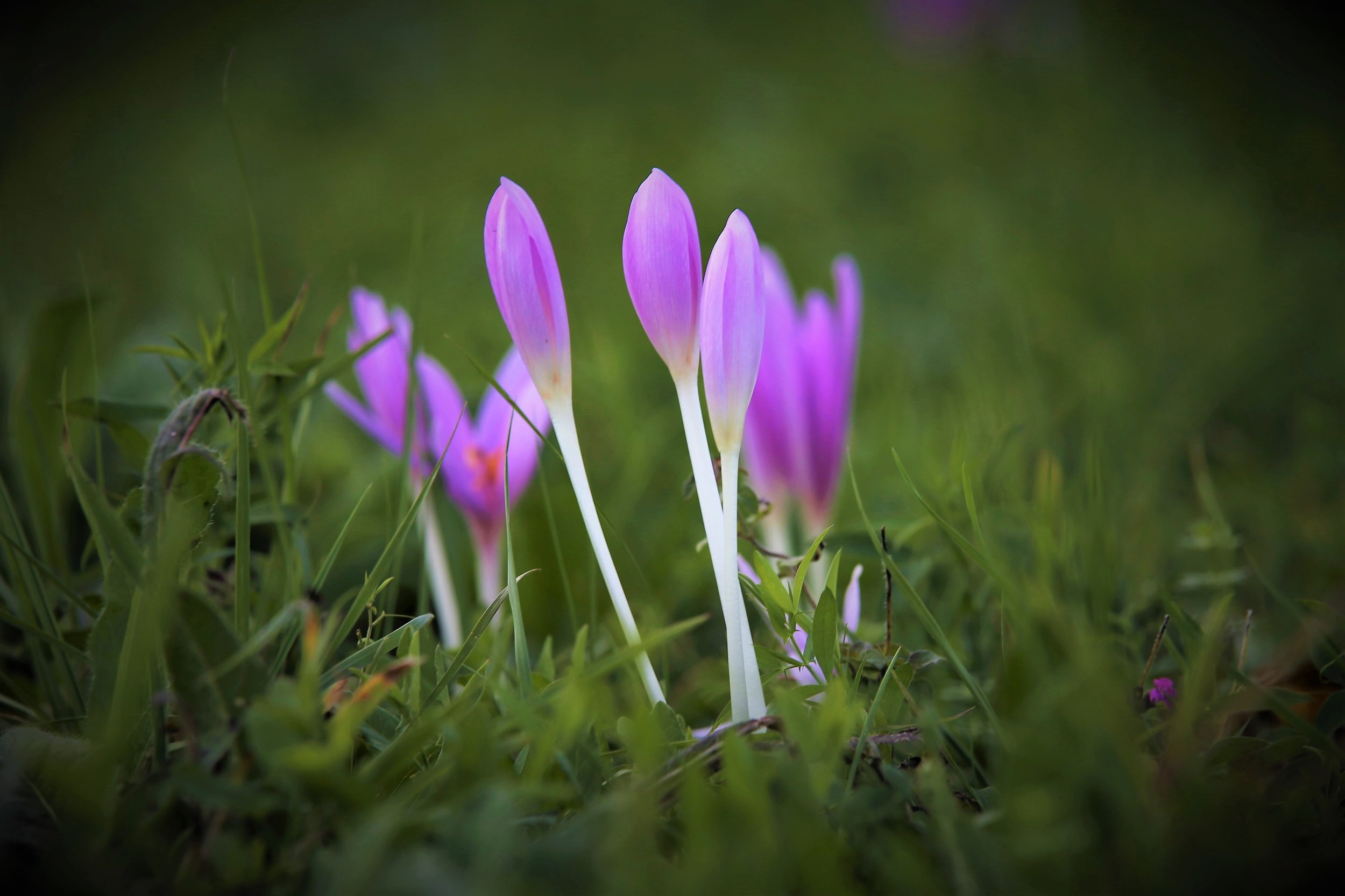I was thrilled to see the first evidence of Crocus foliage pushing their way out of the frozen soil today. Crocus is the earliest bulb (corm, really) to flower in the Mary Snoddy garden, usually in February. At times they are frosted by ice or snow, which doesn’t seem to dampen their cheerful demeanor one bit.
As much as I enjoy these harbingers of spring, I prefer the Crocus that flower in October and November. You will notice that I did not say “Fall-flowering Crocus” or “Autumn Crocus.” There is a good reason why. There are two different flowers which bloom at the same time and look very similar to the unpracticed eye. One produces saffron threads, a culinary delight. The other can kill you if you eat any part of it. Seriously.
Fall-flowering Crocus, Crocus sativus, pronounced CROW-cuss suh-TAI-vuss, is also known as Saffron Crocus. It is grown for saffron spice, as noted above, but the orange-red stigmas are also used for dye. They will stain fingers and clothing. This plant sends up narrow, grass-like foliage before the flowers appear. Plants are small, usually reaching about six inches when they are in flower. C. sativus is cold-hardy in zones 5-8. They prefer a neutral to slightly alkaline soil in full sun. They are occasionally damaged by voles or rabbits.
Autumn Crocus is Colchicum autumnale, pronounced COAL-chik-um aw-tum-NAH-lay. It is taller (eight to ten inches) and its blooms are larger than C. sativus. It appears as a naked bloom, with no foliage at the time of flowering. Weak foliage appears in spring. It is more cold-tolerant (zones 4-10) than C. sativus, will tolerate a wider range of pH, and will withstand a bit more shade. The large pink or purple flowers look fantastic when they appear above a short groundcover like dwarf mondo grass, which also helps support the weak stems. All parts of the plant are highly toxic to people and pets. Deer and rabbits will not touch them.
Tiny C. sativus is planted 2-3 inches deep. Larger C. autumnale is planted 4-6 inches deep. Both these corms are small and flat, and look best when planted in groups or drifts. They will naturalize when planted in the lawn. Pollinators are attracted to the flowers.



